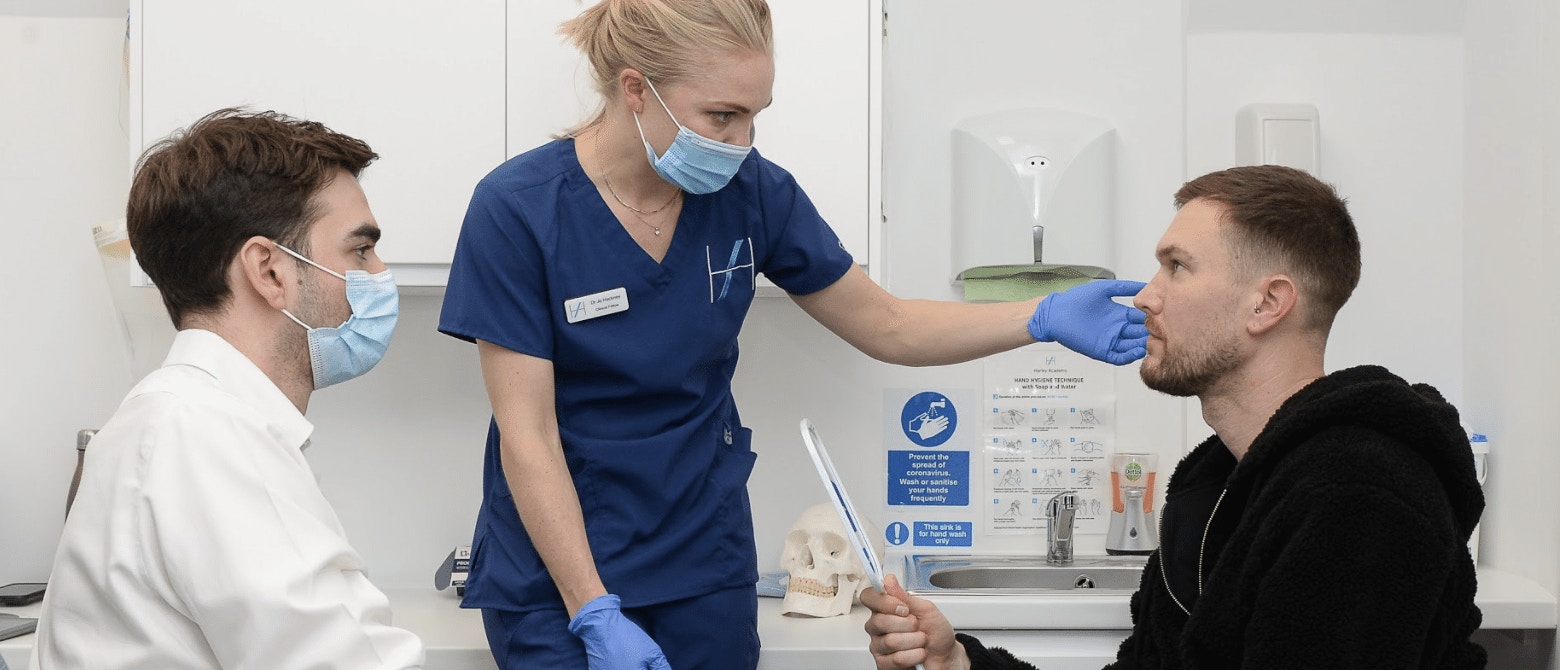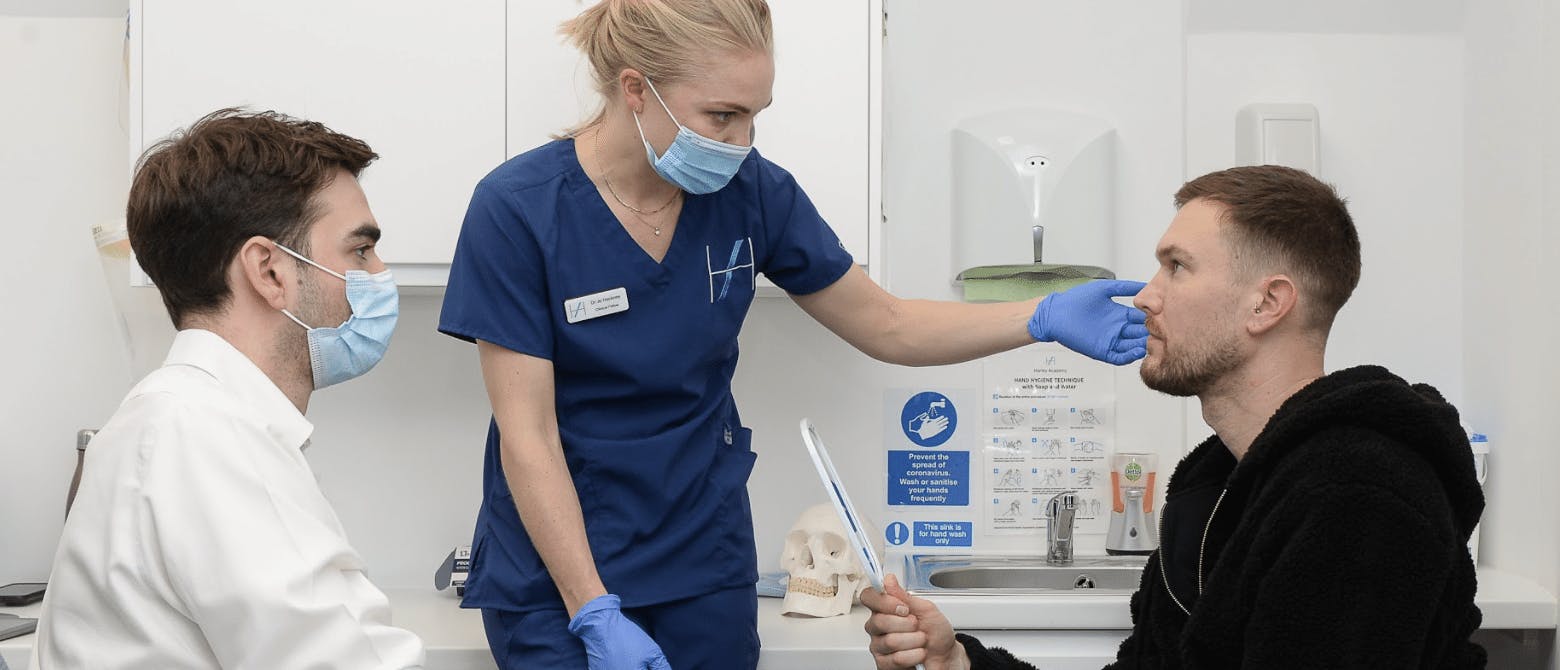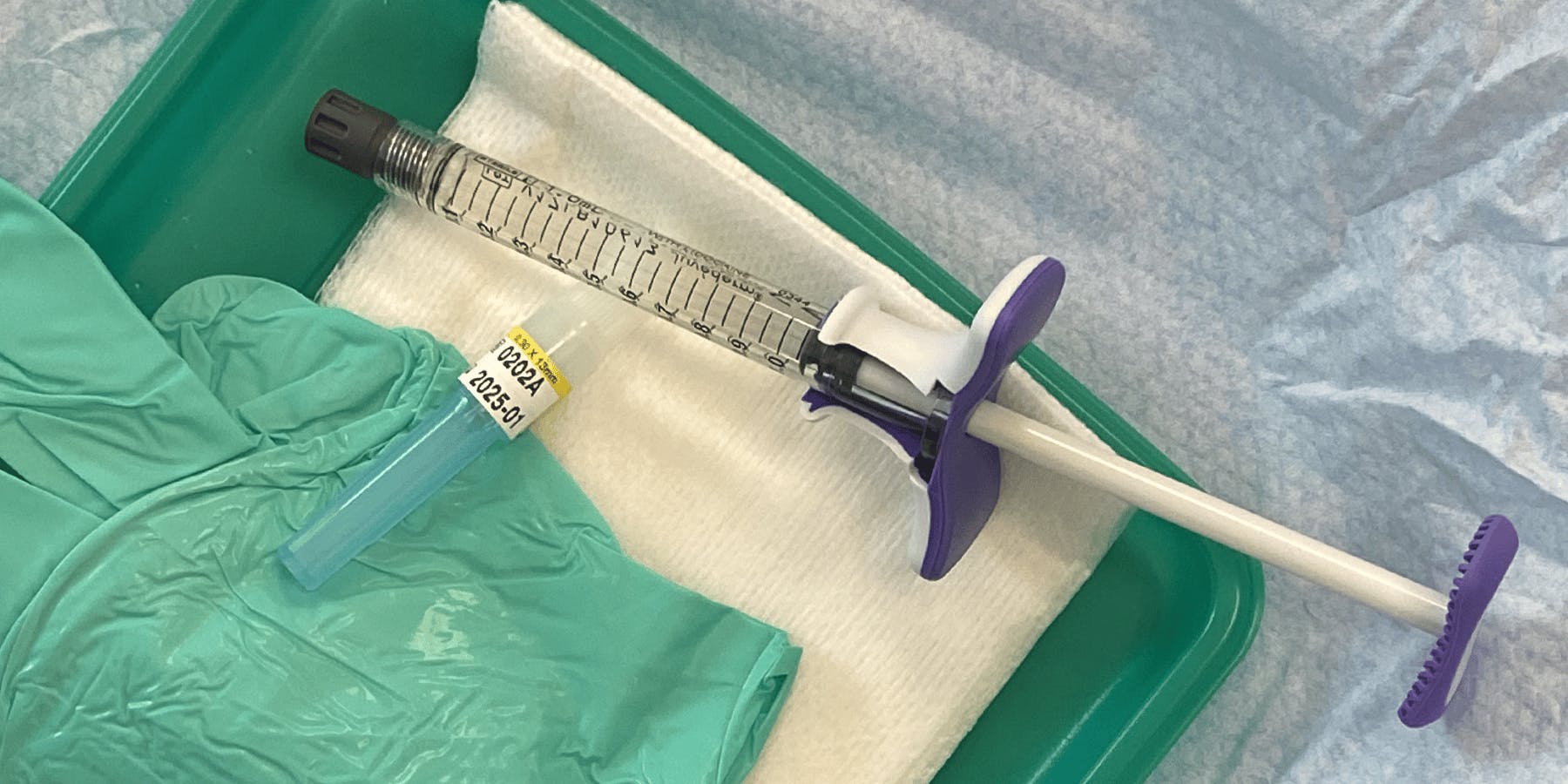Treating other Injectors’ Filler Patients

What’s your stance on treating other injectors’ filler patients?
As a new aesthetics practitioner you obviously want and need to build your practice. However, when it comes to treating patients previously treated by someone else, there are unique factors to consider.
Some medical aesthetics professionals refuse to treat patients who see other injectors or whose filler from previous treatments is still in effect.
We spoke to cosmetic doctor and clinical trainer, Dr Stephanie Damalis to find out more about the tricky area of treating other injectors’ filler patients...

CONSIDERATIONS WHEN TREATING OTHER INJECTORS' FILLER PATIENTS
Many new injectors worry about treating patients who come to them for top ups or next treatments after previously using another injector. What’s your general advice here?
“When treating new patients for the first time, I encourage them to come back for a review session. My advice is to review as many of your patients as possible 2-3 weeks after treatment, when you’re starting out,” says Dr Stephanie.
“This allows you to develop a relationship with your patient and is the best way for you to see how your treatment has settled. I found this helped me learn about treatment outcomes, especially when it comes to Botox as the results are not apparent immediately.”
She adds, “Many patients will come to see you after having treatment from another practitioner, this could have been many years ago or more recently. I always want to establish why this patient is changing practitioners. Did they experience a complication previously? Are they not happy with the result? Or perhaps they’re the type of patient that’s never loyal to one practitioner.”
“If you do decide to treat this patient, remember you’re taking over their care,” she cautions. “This means any subsequent issues from previous filler treatments may become your responsibility, regardless of who injected the original filler.”

What should you look for when deciding whether to treat a patient who has existing filler from another injector?
“As I mentioned, an understanding of why the patient is changing practitioners is important,” Dr Stephanie asserts.
“Some patients move from one practitioner to the next and are never happy with their results. I’m cautious of this type of patient as it’s likely they will not be happy with your treatment and may seek compensation.”
She advises, “Sometimes it’s best to avoid treatment altogether in these cases. Remember that you do not have to treat every patient – sometimes it can actually be in your best interests to refuse treatment.
“You should also take a full medical aesthetics history, exploring previous injectables they have had in as much detail as possible.”

What information, specifically, should aesthetics practitioners try to draw out from new patients regarding their history of injectable treatments and why?
Below are some of the key considerations Dr Stephanie recommends new injectors take into account when discussing patients’ aesthetic treatment history...
- When and what was their last treatment?
- What filler was used, including whether the filler was a permanent implant?
- Are they happy with the outcome? Why/why not?
- Where was the filler placed? This can help you to gauge the complexity of treatment and probability of subsequent issues arising.
- Which technique was used? Cannula vs needle.
- Who was the previous treatment provider? Were they a healthcare professional or a non-medical injector?
- Is the original injector contactable for continuity of care? You may want to request the patient’s treatment records.
- Have they had any problems with previous filler treatments? This will help you to consider complications.
- She also notes that taking a detailed history of past filler treatments helps exclude patients with…
- Unrealistic expectations
- Contraindications to new treatment in that area
- Ongoing complications that should perhaps be managed by the original treatment provider
- New complications that could become your issue if you take over their care.

What are the potential issues that can arise from patients whose previous treatments were performed by another injector?
Dr Stephanie recommends being aware of the following potential issues…
- Patient dissatisfaction from the pursuit of unrealistic expectations
- An aesthetic outcome that does not align with your work or your values due to repeated treatment
- Infection, for instance, dissemination of underlying infection or introduction of infection to a permanent implant
- The theoretical chance that different cross-linking technologies may cause immunological reactions or cross reactions, though this is not supported with strong evidence
- Delayed onset nodules and a broad spectrum of associated diagnoses.

What are some of the main reasons for not treating patients who have had filler elsewhere?
“Some practitioners avoid treating patients who have had filler elsewhere for 3-6 months, particularly if this involves a change of filler brands,” notes Dr Stepanie. “However, there is no scientific evidence to support this. The decision of whether or not to treat is usually based on theoretical risk, experience level and the confidence of the injector.”
She says, “You may also come across patients who have been treated by non-medical injectors who cannot manage complications. Here you may choose to refer these cases on, or manage and treat with support.”
“It’s within your power to politely decline taking on any patient. BUT always be mindful that if the patient attends with an emergency scenario, such as a vascular occlusion, you do have a professional responsibility to them,” she states. “In this scenario you should manage the patient to protect their safety and limit permanent tissue damage.”
“Some practitioners may ask for new patients to commit to having their current filler treatments dissolved first. For example, where a patient presents with lip filler that has caused too much volume and it would be better to start afresh,” she advises.
“There is no harm in deferring non-emergency treatment if you wish to consider the scenario. Explain to the patient that you will need to look into their situation further and will get back to them within a defined period of time. You can then research it and seek further advice from your trusted network,” she counsels.
Finally, Dr Stephanie reminds us, “If you get a sense that you should not treat this patient for any reason, listen to your gut and avoid treatment. It is usually the better option.”

How do you ensure your patient remembers which filler products have been used during their treatment?
“I add the sticker of the products used during their treatments with me to patients’ written aftercare advice, so they have a record. Often they won’t bring this to subsequent appointments, but at least you have tried,” says Dr Stephanie.
“Patients can save the details of their treatments on their phone too. I encourage them to take a photo or screenshot of their aftercare advice, which can be saved to a dedicated Treatments folder on their phone for ease of reference.”
What’s your advice for new aesthetics practitioners who are still worried about treating other injectors’ filler patients?
“There will always be new encounters to face when starting in aesthetics – and throughout the journey. With these patients, use the medical model. Consider the benefits and risks of moving forward for your patient and yourself; you can then make a balanced decision,” reassures Dr Stephanie.
“As you gain experience, you’ll quickly learn which patients may be problematic further down the line if you take on their treatment and will develop good instincts for when to decline treating them.”
We hope you find Dr Stephanie’s advice helpful. If you’d like further details on any of the issues outlined above, leave us a comment on the Harley Academy Instagram account and we’ll respond!
All information correct at the time of publication
Download our full prospectus
Browse all our injectables, dermal fillers and cosmetic dermatology courses in one document
By submitting this form, you agree to receive marketing about our products, events, promotions and exclusive content. Consent is not a condition of purchase, and no purchase is necessary. Message frequency varies. View our Privacy Policy and Terms & Conditions
Attend our FREE open evening
If you're not sure which course is right for you, let us help
Join us online or in-person at our free open evening to learn more
Our Partners














STAY INFORMED
Sign up to receive industry news, careers advice, special offers and information on Harley Academy courses and services

